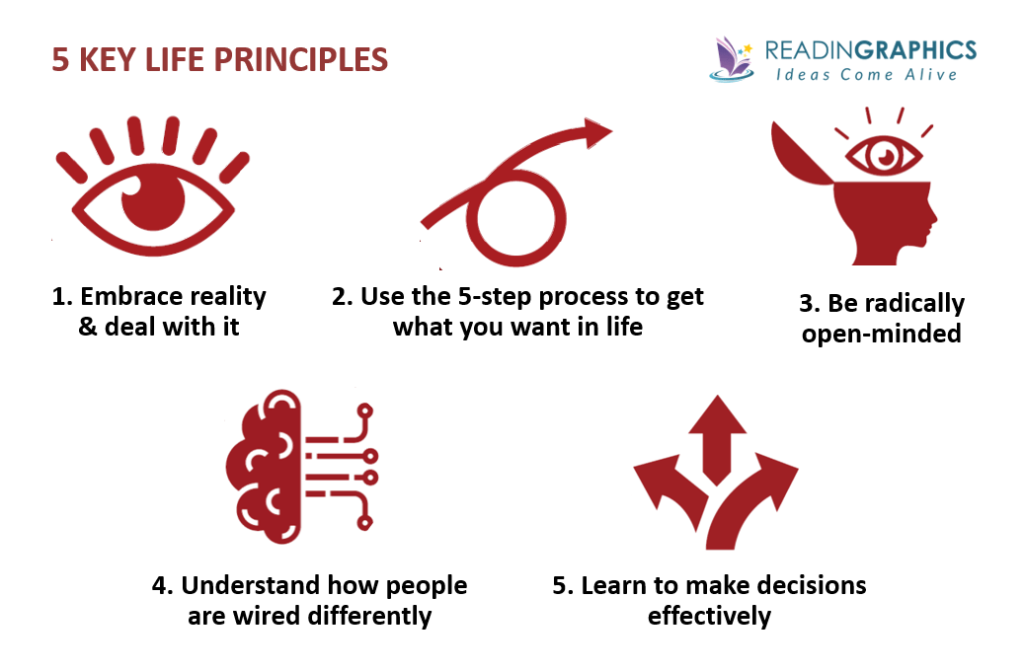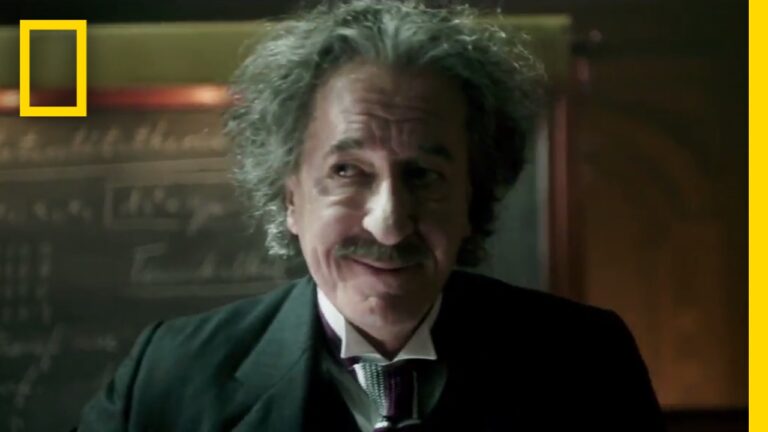
1. Embrace Reality–And Deal With It
Ray Dalio’s principle of “Embrace Reality and Deal with It” underscores the importance of confronting the unvarnished truth of any situation, irrespective of its complexity or discomfort. It urges individuals to forsake denial or evasion and instead wholeheartedly engage with the facts, challenges, and opportunities at hand. This approach entails candidly acknowledging both successes and failures, learning from them objectively, and using those insights to foster growth and improvement. By acknowledging and understanding reality as it is, individuals can recalibrate their strategies, plan contingencies for potential difficulties, and adapt with agility to changing circumstances. This principle essentially advocates for an open-eyed and pragmatic approach to decision-making, enabling individuals to make well-informed choices based on an accurate understanding of their circumstances.
In essence, Dalio’s principle entails an unwavering commitment to facing the world’s realities, regardless of their complexities or discomforts. It encourages individuals to reject denial or evasion and instead engage candidly with the facts, challenges, and opportunities presented by any situation. This approach involves learning from both successes and failures, employing objective analysis to derive insights, and leveraging those lessons to drive growth and development. By confronting reality head-on, individuals can adjust their strategies, develop contingencies for potential challenges, and remain adaptable in response to changing circumstances. Ultimately, this principle advocates for a practical and candid decision-making approach, empowering individuals to make well-informed choices grounded in a clear and accurate understanding of their environment.
2. Use The 5-Step Process To Get What You Want In Life
Ray Dalio’s principle of the ‘5 Step Process to Get What You Want in Life’ encapsulates a systematic approach to achieving personal and professional goals. The process involves first setting clear and meaningful goals that align with one’s values and aspirations. Second, individuals must identify and confront the obstacles that stand in the way of those goals, seeking honest assessments of their weaknesses and shortcomings to effectively address them. Third, individuals must accurately diagnose the root causes of these obstacles, recognize patterns, and refine their strategies for overcoming challenges. This process emphasizes the importance of learning from failures and continually adapting approaches. Fourth, individuals should design actionable plans by breaking down their overarching goals into practical, manageable steps. Finally, consistent execution of these plans, coupled with regular reviews and adaptations, ensures progress toward desired outcomes. This process underscores a strategic, introspective, and disciplined approach to pursuing success.
Ray Dalio’s ‘5 Step Process to Get What You Want in Life’ outlines a methodical approach to achieving one’s aspirations. It commences with setting well-defined goals that resonate with an individual’s values and desires. The second step involves acknowledging and addressing the obstacles that hinder progress, necessitating candid self-assessment, and confronting personal weaknesses. The third step underscores the significance of delving into the root causes of these challenges, enabling a more effective refinement of strategies through learning and adaptation. Fourthly, a practical blueprint is constructed by breaking down overarching objectives into manageable action plans. The final step emphasizes consistent execution of these plans, supplemented by regular evaluation and adjustments to ensure steady advancement toward desired outcomes. This systematic process underscores a strategic, reflective, and disciplined path to attaining personal and professional success.
3. Be Radically Open-Minded
When Ray Dalio refers to being ‘radically open-minded,’ he means adopting an attitude of receptivity and flexibility that is deeply committed to seeking out diverse perspectives, embracing constructive criticism, and challenging one’s own preconceptions and biases. It involves actively inviting input from others, valuing differing viewpoints, and being willing to change one’s opinions based on new evidence and insights. This approach fosters a dynamic learning process, where individuals continuously refine their understanding of the world, make better-informed decisions, and adapt more effectively to the complexities of various situations.
4. Understand How People Are Wired Differently
When Ray Dalio suggests that we “Understand that people are wired differently,” he means recognizing that individuals have unique personalities, perspectives, and ways of thinking due to a combination of genetics, upbringing, experiences, and cultural backgrounds.
This diversity in cognitive and emotional wiring influences how people approach problems, communicate, make decisions, and interact with others. By acknowledging and appreciating these differences, individuals and teams can foster better collaboration, creativity, and problem-solving.
This understanding can lead to more effective communication, reduced conflicts, and the ability to leverage the strengths that each individual brings to a group or organization.
5. Learn How To Make Decisions Effectively
Ray Dalio’s concept of ‘learning to make decisions effectively’ involves honing the ability to consistently and methodically arrive at sound choices by drawing from a combination of data, diverse viewpoints, and critical analysis.
It encompasses a structured approach to decision-making that considers both historical and current information, leverages the expertise of knowledgeable individuals, and takes into account potential biases and blind spots. Through continuous learning from successes and failures, this process becomes refined and more efficient over time, enabling individuals and organizations to navigate complexities, adapt to changing circumstances, and achieve their goals with greater accuracy and confidence.






